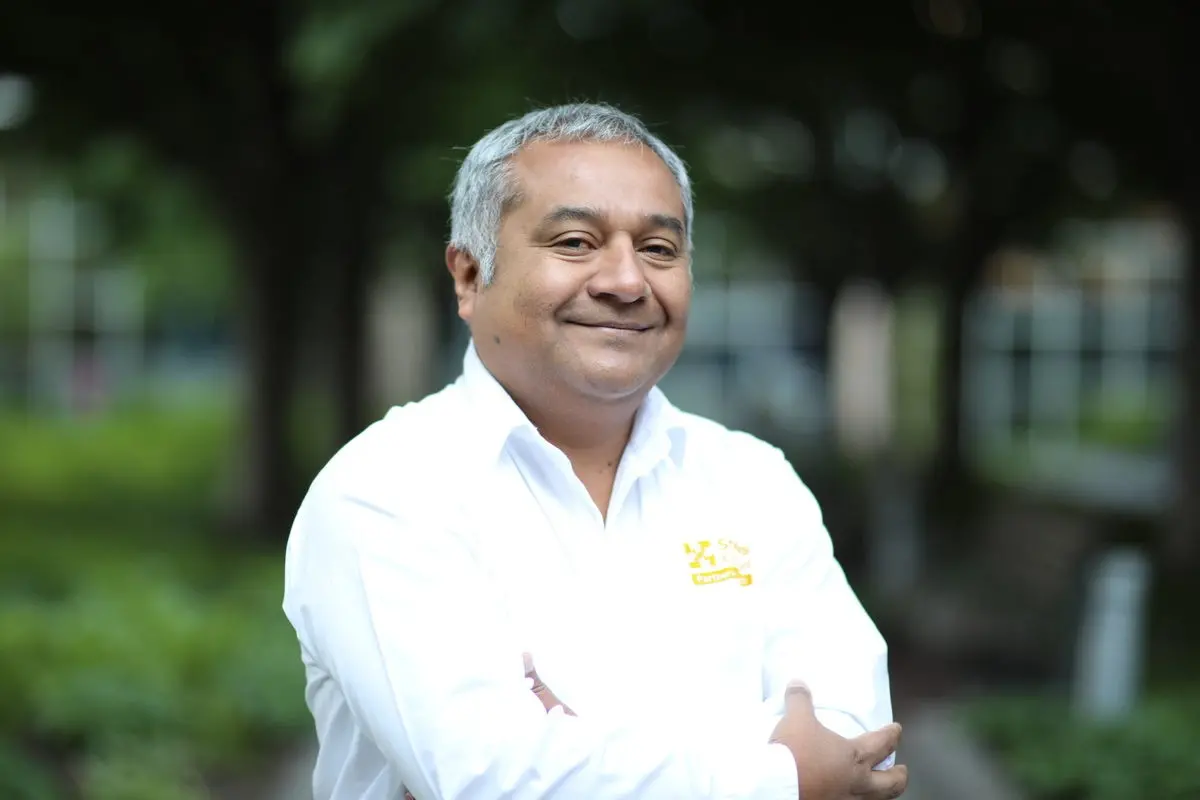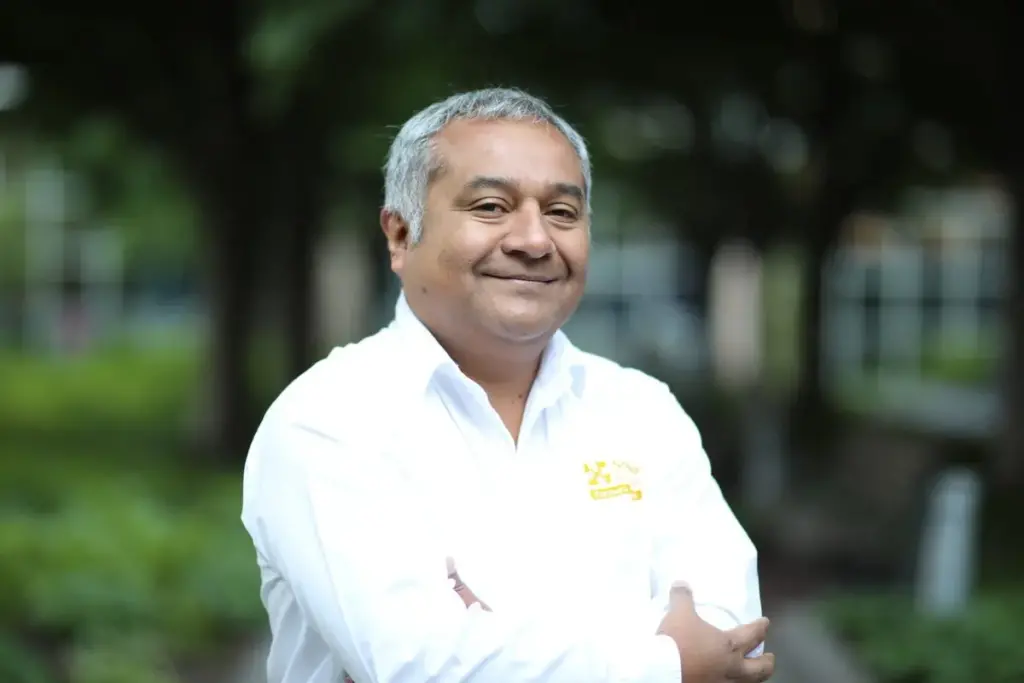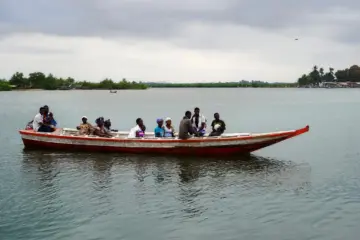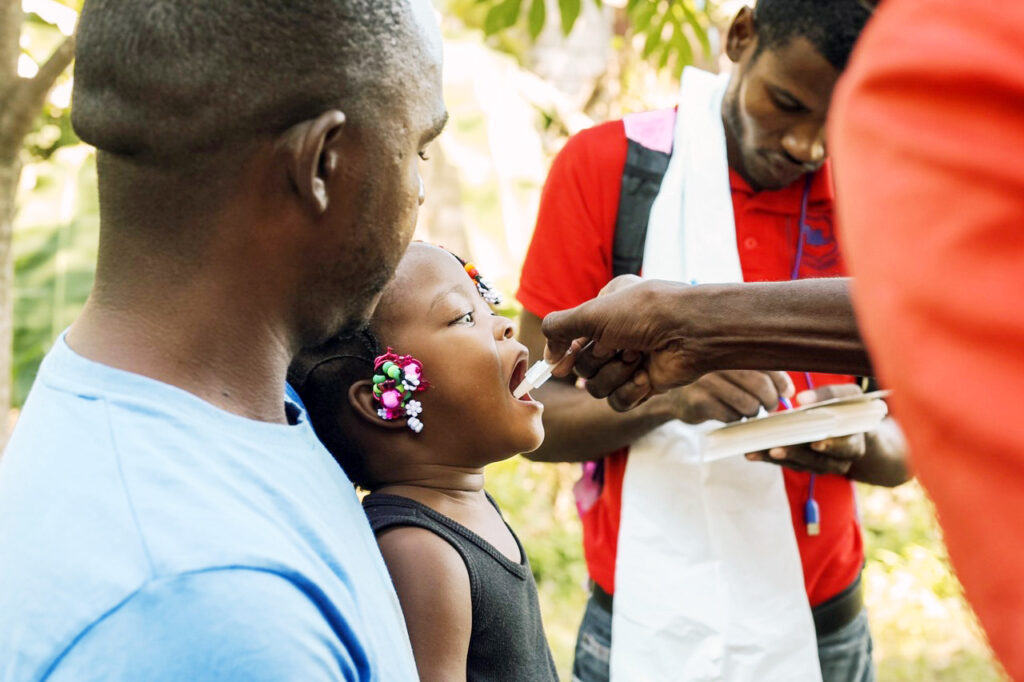Q&A: Dr. Leonid Lecca On The Ongoing Fight Against Tuberculosis In Peru

Executive director of Socios En Salud reflects on tuberculosis challenges, progress after United Nations meeting
Posted on Oct 13, 2023

Every year, tuberculosis (TB) claims more than 1.6 million lives worldwide. In the Americas, Peru has approximately 13% of the cases, with the highest number of TB cases after Brazil and the highest number of multidrug-resistant tuberculosis (MDR-TB) cases.
For more than 25 years, Socios En Salud, as Partners In Health is known in Peru, has partnered with the Peruvian government to respond to TB, including efforts to strengthen detection, treatment, prevention, and research. This work has included curing diseases once thought incurable: In the 1990s, Socios En Salud cured 75 MDR-TB patients, which inspired the World Health Organization (WHO) to revise its protocols and recommendations for the treatment of the disease in impoverished settings.
Since then, Socios En Salud has expanded its efforts to detect and treat TB cases throughout Peru. Tools such as the TB Backpack, which enables detection of the disease within minutes, or the TB Mobile, a truck with state-of-the-art X-ray equipment, have made it possible for thousands of people to access care. Last year, for example, the TB Mobile screened more than 28,000 people.
These achievements have established Socios En Salud as a leader in TB care, making it critical to regional and global conversations about the disease. Most recently, Socios En Salud attended the United Nations’ High-Level Meeting on TB, where a series of political declarations were approved that included key actions and investments needed to save millions of lives.
Dr. Leonid Lecca, executive director of Socios En Salud, participated in this meeting, which was held in New York on September 22. An expert in TB care, Lecca is also a focal point of the Parliamentary TB Front for the Americas and a member of the TB Social Observatory of the Americas.
We sat down with Lecca to learn more about the latest developments in TB care and what’s next:
In 2018, the United Nations held its first-ever High-Level Meeting on TB, where a political declaration was signed that would serve as a guide for the fight against TB at the global level. What were the key commitments of this declaration and to what extent did the Peruvian government adopt them or not?
More than 100 delegations from different countries participated in the meeting, and 15 heads of state spoke, one of whom was the president of Peru, the only one from the Americas region to speak out. All countries committed to achieving the Sustainable Development Goals and the WHO’s End TB strategy, and indicators were drawn up regarding the target for the number of people to be diagnosed or treated for TB. There were also components linked to equity in human rights, vulnerable populations, and an accountability framework for countries.
In practice, very few of the initial commitments were fulfilled. Of all the goals for diagnosis, treatment, and prevention, the only one that was met was the target of 6 million people with HIV accessing TB preventive treatment within four years—the number achieved was 10 million. In terms of people receiving TB treatment in four years, the target was more than 40 million, but only 26 million received treatment. Among children, 3.5 million should have received treatment, but the number reached was 1.9 million. In the case of MDR-TB, the gap was even more tragic: 1.5 million people should have received treatment, but only 650,000 did.
Like many other countries, Peru has failed to meet the targets. The WHO asked countries to be accountable, but very few did so, including Peru. We have no data on how we have progressed. The only thing we have are the global TB reports, where data from Peru appears. [We know that] diagnostic coverage has fallen because of COVID-19. Before the pandemic, there was a 20% gap and now it is 40%. Unfortunately, we have not reached the desired outcomes.
What role have Latin American countries played in the fight against tuberculosis, especially in relation to this new political declaration on TB?
We [civil society leaders] have been working for the new political declaration since last year from various sectors. Socios En Salud, through me, had the opportunity to join the global civil society group, where we have been pushing for a new political declaration with better goals and accountability mechanisms. However, it has been difficult, politically speaking, to come up with a better statement. Not all of the most vulnerable groups have been considered and there has been a lot of resistance to putting indicators in place.
The Latin American bloc is together. This year, WHO held a TB meeting in Brazil, and next year the Stop TB Partnership meeting will also be held in Brazil. We hope to continue to push [for progress on] some regional issues linked to vulnerable populations, such as people in prisons, indigenous populations, and migrants, who are increasingly affected by TB.
Innovation, research, and development in TB were key points at this year’s High-Level Meeting. How has Socios En Salud contributed to this goal in the past year?
Socios En Salud is playing an important role in the region and in the world when it comes to the implementation of technology, diagnostic solutions, and new treatments to address TB. In the Americas region, we were the first organization to implement a new diagnostic algorithm using mobile radiology and artificial intelligence for automated reading, followed by a molecular test. This is being replicated by several countries in the region with our advice, such as Colombia and the Dominican Republic, as well as by organizations that have asked us for support and have visited us to learn about our approach.
In terms of treatment, we recently held a meeting of endTB researchers, which is an initiative for shortened oral treatments of nine months for MDR-TB. The initiative has had very good results, which will be presented in November at the World TB Conference. We are in the early stages of talking with the Peruvian authorities so that these results can be shared and can help health systems make better decisions in the treatment of MDR-TB patients in the country; 40% of all the patients who were treated with these different regimens are Peruvian, so we have local evidence that will help the world to improve treatment regimens.
In May, the WHO declared the end of the COVID-19 global health emergency. However, the impact it had on the fight against TB is irreversible. What are the lessons learned and how must we include TB in pandemic preparedness and responses moving forward?
Health systems were not prepared. The science was not ready. However, all this has shown us that, with financial resources, you can move fast in finding new vaccines and diagnostics. That is a lesson for TB, which has not had a new vaccine for many decades and needs one.
Unfortunately, the pandemic was not used to search for and treat TB cases. COVID-19 was an airborne respiratory infection with a more rapid course, but still similar to TB. During the first wave, we found that COVID-19 was affecting the same communities in North Lima and East Lima where we always found TB cases.
That is why our rapid response teams, in addition to providing COVID-19 tests in the communities, asked for a sputum sample from people with respiratory symptoms to rule out TB through a molecular test: the GeneXpert. Through this test we found many TB cases in the community. Some also had COVID-19.
This information was shared with the Peruvian Ministry of Health, and finally, several months later, a directive was issued to do joint searches for COVID-19 and TB. The finding was that Peru has regressed in all indicators: the gap in TB detection went from 20% before the pandemic to 40%. The WHO estimates that in Peru there are 44,000 cases each year and only 26,000 are being found.
The problem of climate change has intensified and the forecasts for the coming years are not encouraging. To what extent does this increase the risk of infectious diseases such as TB?
Actually, there are no studies that directly link the effect of global warming with the development of TB. What we have seen are indirect effects: If global warming affects crops, through landslides or droughts, this can indirectly affect people’s nutrition, which could complicate their immune systems and make them more susceptible to infections such as TB. We are trying to assess the impact of climate [on TB], but we have not yet found a direct relationship.
During the UN General Assembly meeting, there were satellite discussions on climate change and how it affects people’s health, for example how mosquito-borne diseases due to temperature change will continue to produce outbreaks in the poorest communities [as is the case with dengue fever in Peru]. So, better surveillance systems are being discussed to monitor infections, outbreaks, and resurgences.
Over the past decades, we’ve made remarkable progress in the fight against tuberculosis and MDR-TB, globally and in Peru. But there is still a lot of work to be done. Where are we currently in the fight against tuberculosis?
The challenge right now in Peru is to rapidly implement the latest recommendations that are in the WHO’s TB prevention and control guidelines. For a long time, we raised the concern that there were no innovations. But in the last four years, the WHO has rapidly updated its diagnostic, treatment, and prevention guidelines, and many of these updates still have not been included in Peru’s national TB protocols.
We need to move quickly to include the lessons and new technologies that the WHO now allows us to use, such as better diagnostics, shortened oral treatment regimens, shortened oral preventive therapies, and a number of other innovations that are slowly being implemented in Peru, but whose work we need to accelerate.
How has Socios En Salud contributed to the fight against TB in Peru, both historically and in recent years?
We have had the opportunity to help on many issues related to diagnosis, treatment, and prevention, but also related to social determinants, stigma, human rights, discrimination, and gender. For us, our TB work is a key opportunity to continue working with the Peruvian Ministry of Health to help them make the best decisions and ultimately reduce the suffering of individuals and families affected by this terrible disease.
To improve TB screening, we continue to help implement new diagnostic algorithms, including mobile radiology, artificial intelligence, and molecular testing, not only in Peru but also at other PIH sites such as Lesotho and Malawi.
In terms of treatment, we are working to share the results of the endTB project, so that these lessons can be applied by other countries. The challenge is to implement the shortened preventive therapy. We are already doing it in North Lima and in our own medical centre in East Lima, but there is still a need for greater expansion at a national level and in other countries in the region.
Looking ahead, as we continue our work to diagnose and treat TB in Peru, what are your priorities as executive director of Socios En Salud? What’s next for our TB work?
We are now in discussions with Peru’s National TB Program so that many of the WHO updates can be included. We had already made progress in some areas, such as the active search for TB, but where there have been delays is in the implementation of shortened oral treatments, which we are discussing to see how we can help. The same issue has happened with preventive treatment. Our goal is to continue strengthening the health system at all levels, so that people can have access to timely, dignified, and quality treatment.
We are approaching disease control under two main pillars. One is to do everything we can to strengthen the health system through our 5S model, so that regular health services can admit people and give them timely, quality care.
But we also have another very important pillar, because we recognize that probably the poorest and most vulnerable people have not even reached a health service. We have to go and look for them in the communities themselves and bring them closer to a diagnosis, to a medical evaluation, and then, obviously, link them to the formal health system, so that they can continue with their treatment or whatever they need. That is what our seven health programs are focused on, and we hope to continue scaling up these initiatives and working for the benefit of the communities.



